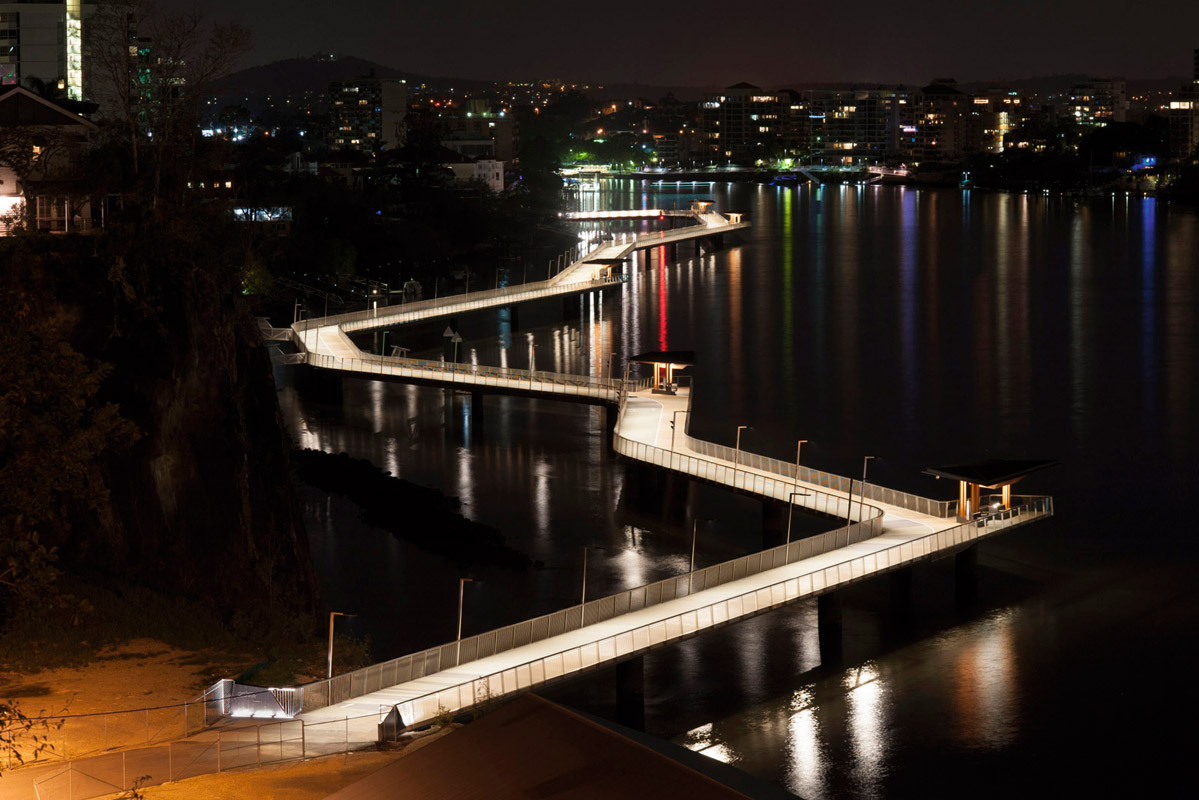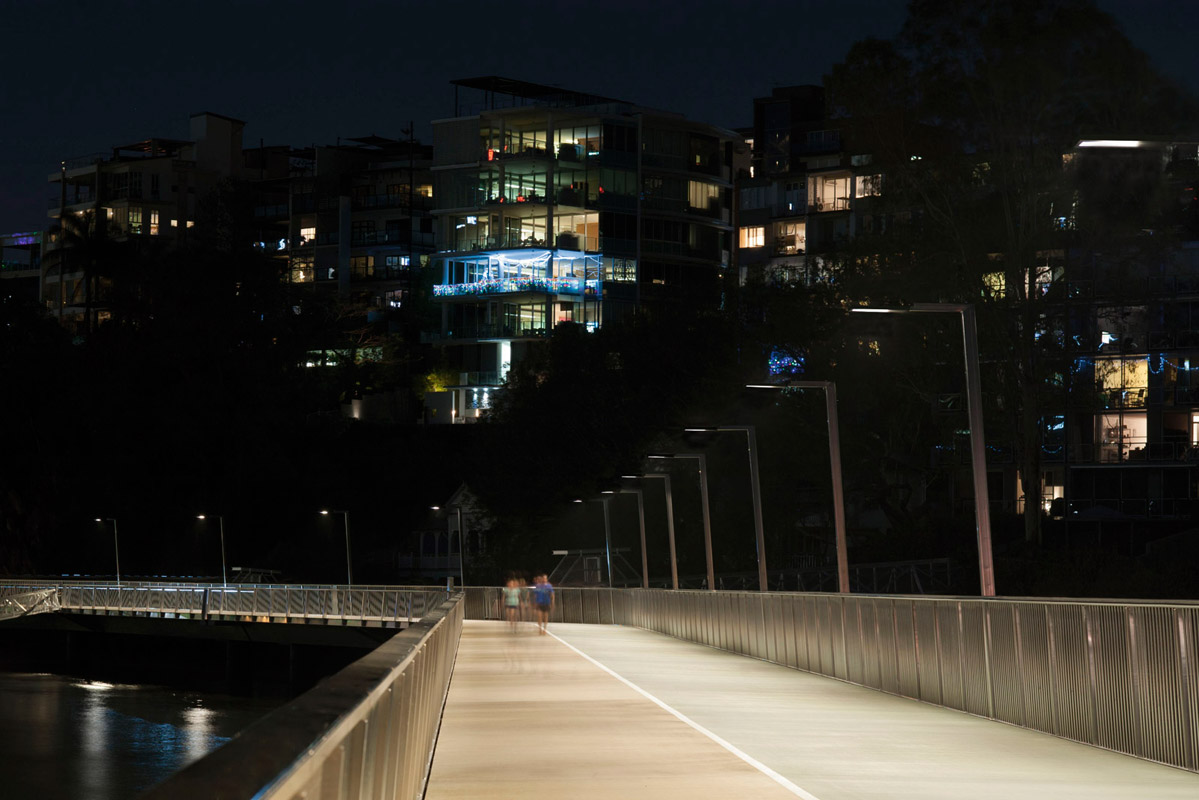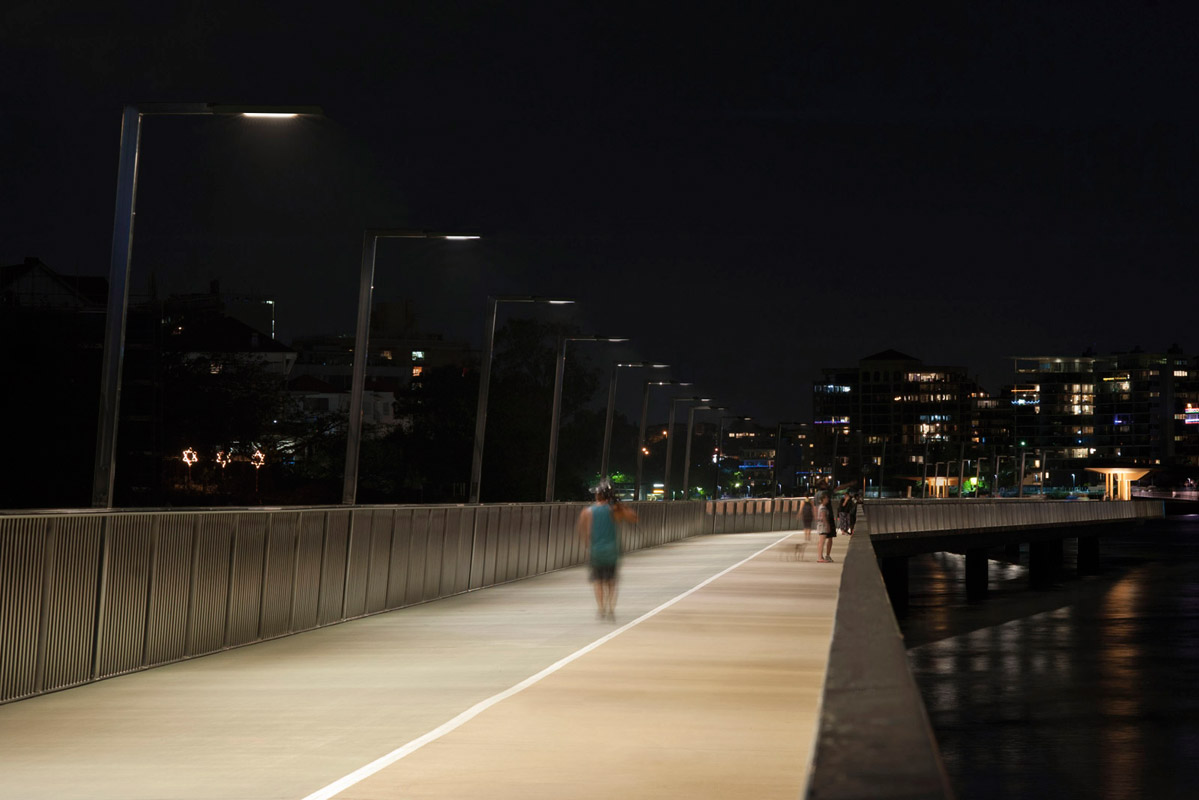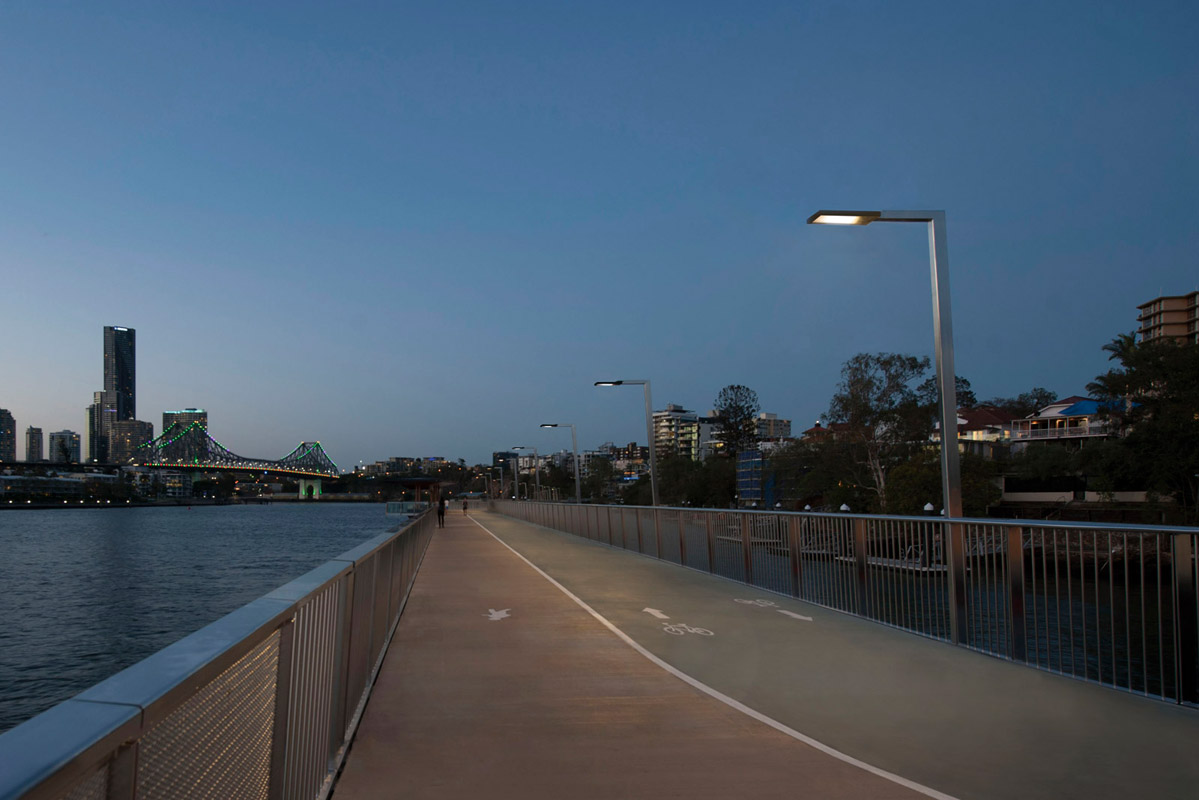
Brisbane Riverwalk
NEW FARM RIVERWALK
Illuminating a city’s symbol of resilience Opened during late September 2014, the New Farm Riverwalk in Brisbane is a walkway that has not only been restored after being washed away by floodwaters, but has triumphantly returned to provide a key connection between New Farm and the Brisbane City centre. With the lighting design by Andrew Richardson from ARUP featuring WE-EF luminaires, this landmark winds its way across the water with the perfect balance of elegance and engineered resilience that could see it withstand a one-in-2,000 year flood. The original New Farm Riverwalk was extensively damaged in 2011 when floodwaters rose so high that a section broke off and was washed downstream. Since then the Brisbane City Council has made it a primary initiative to replace it with a new structure designed to endure the rigorous Queensland weather conditions. The Riverwalk is a popular pedestrian traffic area with more than 3,000 cyclists, runners, walkers and tourists using the facility every day. Its design includes a segregated pedestrian and cycle path – 2.5 metres and 3.5 metres wide respectively – together with shaded rest and viewing areas at various locations. Brisbane-based lighting company Raylinc supplied post mounted WE-EF VFL540 street and area lighting luminaires to illuminate the main expanse of the walkway, while ETC300 series inground uplights and FLB400 series floodlights were used in pedestrian shaded areas and tourist lookouts. These WE-EF products were seen as unique in that they provided a low wattage solution with good optic distribution to suit the application – that had fixed pole spacing, fixed pole height and fixed outreach arm length. The aesthetic shape of the VFL540 also complemented the pole profile. “At the time, to specify LED luminaires may have been seen as a risky, unknown quantity,” Richardson explained. “Various products were on the market and due to the unknowns it was much safer specifying a well-known manufacturer; that is certainly still the case now with LED luminaires”. While the council did not have significant experience at that stage in specifying LED for exterior applications, it was shown by ARUP that such a light source presented a better option than a high-wattage metal halide luminaire. Using 2-3 times less power to achieve the same 'P' lighting category required, and providing a long life with minimal maintenance even in a fairly harsh marine environment, were key factors in its favour.
The main challenge of this project was to meet the criteria for 'P' category lighting, based on fixed pole locations, fixed pole heights and fixed luminaire overhang distances. “Two options were available to suit the requirements – either a higher wattage HID luminaire at longer pole spacing or a low wattage LED luminaire at short pole spacing. It was requested that the pole spacing be set based on a 30-metre structural pile spacing. However, with the fixed design parameters, a 30-metre spacing did not quite work with various higher wattage luminaires; therefore, the decision to install luminaires at 30 metres, and then evenly in between, suited the lower wattage VFL LED luminaire,” Richardson said. “Some of the limiting factors included the path width, pole height, pole outreach arm length, luminaire overhang distance and architectural aesthetics, i.e., where the poles could be placed in relation to the structural elements. Together with the many limiting factors, it was determined that a lower wattage and shorter pole spacing provided a better, more uniform lighting design,” he explained. A lower wattage luminaire was also suited to the cable sizes and circuit quantities constraints of the electrical infrastructure. “The rectangular sharp edges of the WE-EF VFL luminaire also tied in well with the architecture,” Richardson added. The VFL540’s advanced control options, which range from simple power-saving dimming systems to complex asset management, provided the necessary flexibility. “In conjunction with being able to select a specific optic distribution to best suit the application, the light was well controlled and resulted in limited spill light into the river. This allowed the design to become very finely tuned,” Richardson said. The wide range of wattages and beam distribution offered by WE-EF meant that standard products could be specified without any customisation being required. Additionally, the full cut-off design of the VFL540 luminaire provided critical glare-controlled illumination for pedestrians and especially for the maritime vessels. The combination of low maintenance luminaires and a new resilient walkway design makes the New Farm Riverwalk a Brisbane landmark that will last well into the future.
Architects: Cox Rayner Architects Lighting Designer: Arup Lighting, Brisbane (AUS)
Loading related products...



